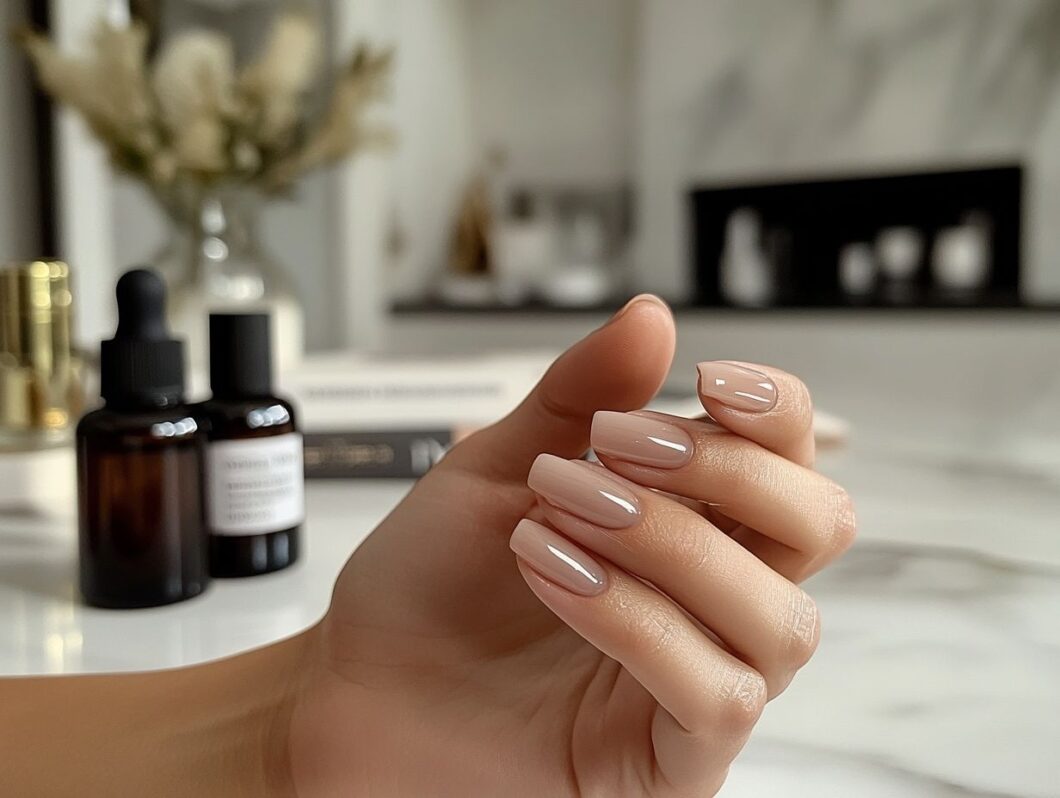Nail health is often overlooked, yet strong and beautiful nails are a reflection of overall well-being. In this article, I will explore the fascinating anatomy of nails and the various factors that influence their strength and growth, including diet, hygiene, and care.
I will provide essential tips for achieving longer, healthier nails, along with practical solutions for common issues such as brittleness and fungus. Preventive measures will also be discussed to help maintain nail vitality and protect against damage.
Get ready to enhance your nail care routine.
Key Takeaways:
Understanding Nail Health
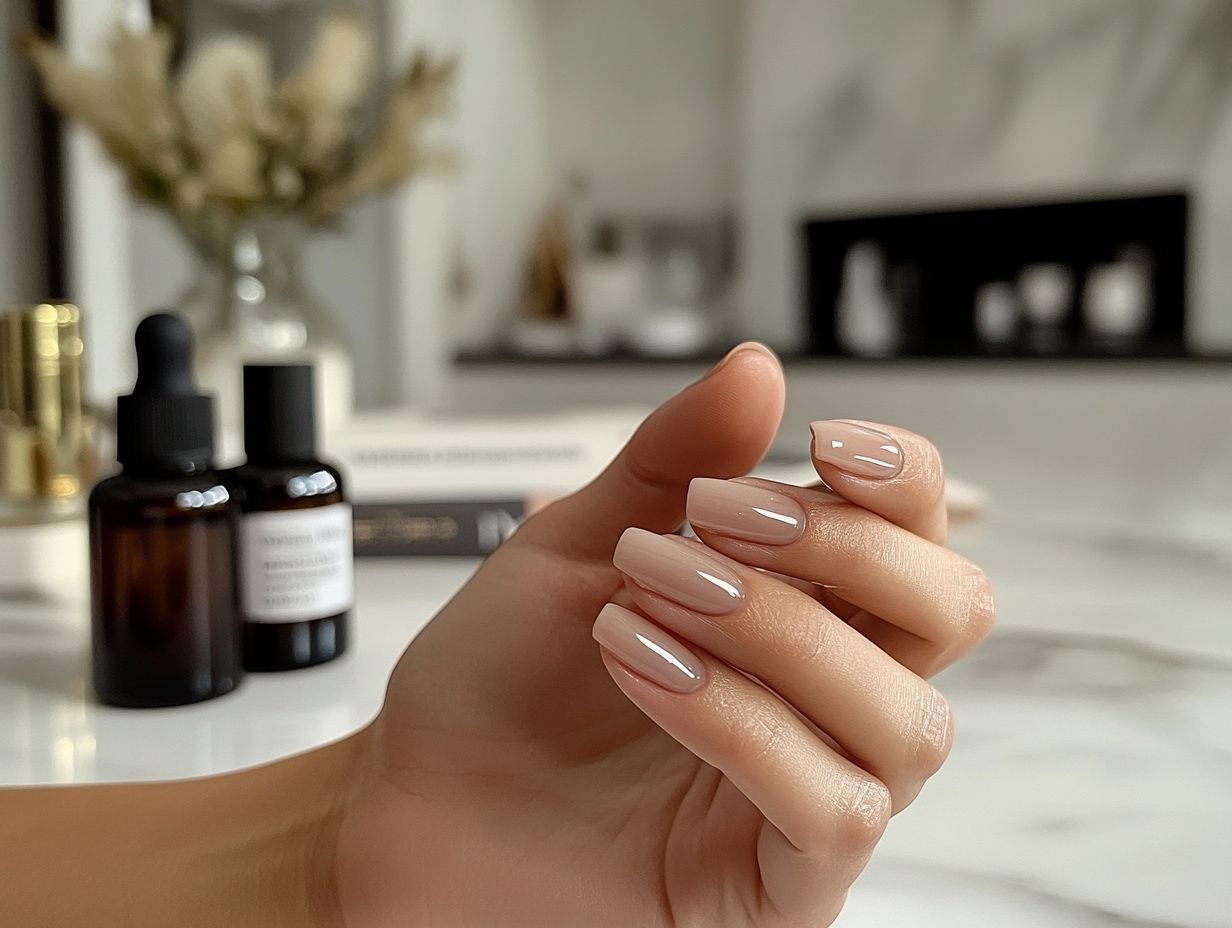
Understanding nail health is essential for achieving and maintaining healthy nails, which serve to protect the sensitive tissues beneath.
My nails are composed of layers of a protein called keratin, which makes them resilient but also susceptible to various health issues such as brittleness, discoloration, and fungal infections.
By adopting effective nail care practices, including proper hygiene and nutrition, I can significantly enhance nail strength and promote growth.
Integrating nutrient-rich ingredients like biotin and essential vitamins such as Vitamin E, Vitamin C, and Vitamin D into my routine can further support nail health, positively impacting not only the appearance but also the overall well-being of my nails.
The Anatomy of a Nail
The anatomy of a nail consists of several critical components, including the nail bed, cuticle, and nail matrix, each playing a vital role in the nail’s overall health and function.
The nail bed acts as the supportive layer, anchoring the nail while supplying essential nutrients that promote strength and growth. Above this, the cuticle serves as a protective barrier, shielding the underlying tissues from infection and damage, which makes proper cuticle care essential.
The nail matrix is where new nail cells are generated, ultimately determining the thickness and durability of the nail as it grows.
Furthermore, maintaining adequate hydration is crucial, as it helps prevent brittleness and ensures that these components work together effectively to produce healthy, resilient nails.
Factors Affecting Nail Strength and Growth
I understand that several critical factors influence nail strength and growth, including genetics, environmental influences, lifestyle choices, and overall nail care practices.
I recognize that maintaining a healthy diet rich in vitamins and minerals is essential for supporting nail health. Additionally, adhering to proper nail hygiene routines can help prevent common issues, such as fungal infections and brittleness.
I also find that incorporating targeted nail treatments, such as moisturizers and nail strengtheners, along with effective hydration techniques, can significantly enhance both the appearance and resilience of my nails.
Diet and Nutrition
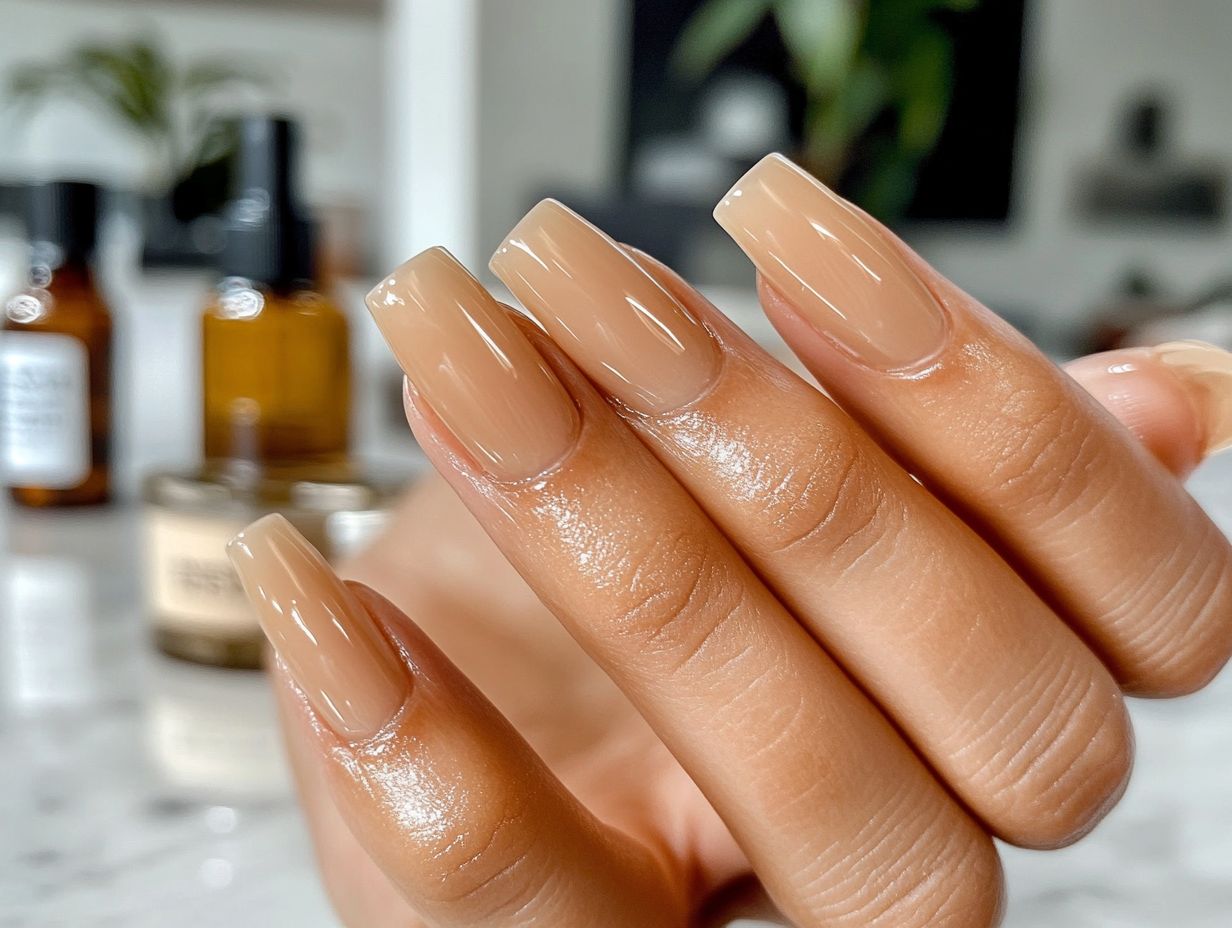
I recognize that diet and nutrition are crucial in promoting nail health, particularly through the incorporation of biotin, essential vitamins, and nutrient-rich ingredients that support both nail growth and strength.
To achieve strong and resilient nails, I make it a priority to include foods rich in these vital nutrients. For example, I find that eggs and avocados are excellent sources of biotin, a B vitamin known to enhance keratin production, which is essential for nail structure.
Additionally, I incorporate Vitamin E, abundant in almonds and spinach, to protect my nails from free radical damage, thereby promoting overall health. I also ensure that I consume Vitamin C, found in citrus fruits and bell peppers, as it supports collagen synthesis, which is vital for maintaining nail integrity.
Moreover, I include lean proteins and leafy greens in my diet, creating a balanced nutritional approach that not only enhances the appearance of my nails but also contributes to my overall well-being, ensuring that my nails are both strong and aesthetically pleasing.
Hygiene and Care
Maintaining proper hygiene and care is essential for ensuring my nail health, which includes regular nail trimming, filing, and cuticle care, along with effective nail hygiene practices.
These practices are vital in preventing potential infections that can arise from neglecting nail maintenance. I also make it a point to utilize quality nail care products, such as moisturizers and strengthening treatments, to nurture both my nails and the surrounding skin.
Additionally, I incorporate stress management techniques, like mindfulness and relaxation exercises, into my routine. High stress levels can lead to unhealthy habits, such as nail biting, which can further compromise nail integrity.
By prioritizing these elements, I am able to cultivate not only aesthetically pleasing nails but also a solid foundation for overall nail health.
Tips for Stronger, Longer Natural Nails
To achieve stronger and longer natural nails, I recognize the importance of adopting effective nail care techniques. This includes establishing a consistent nail routine that incorporates moisturizers such as coconut oil and hand creams, both of which promote nail hydration and strength.
Proper Nail Care Techniques
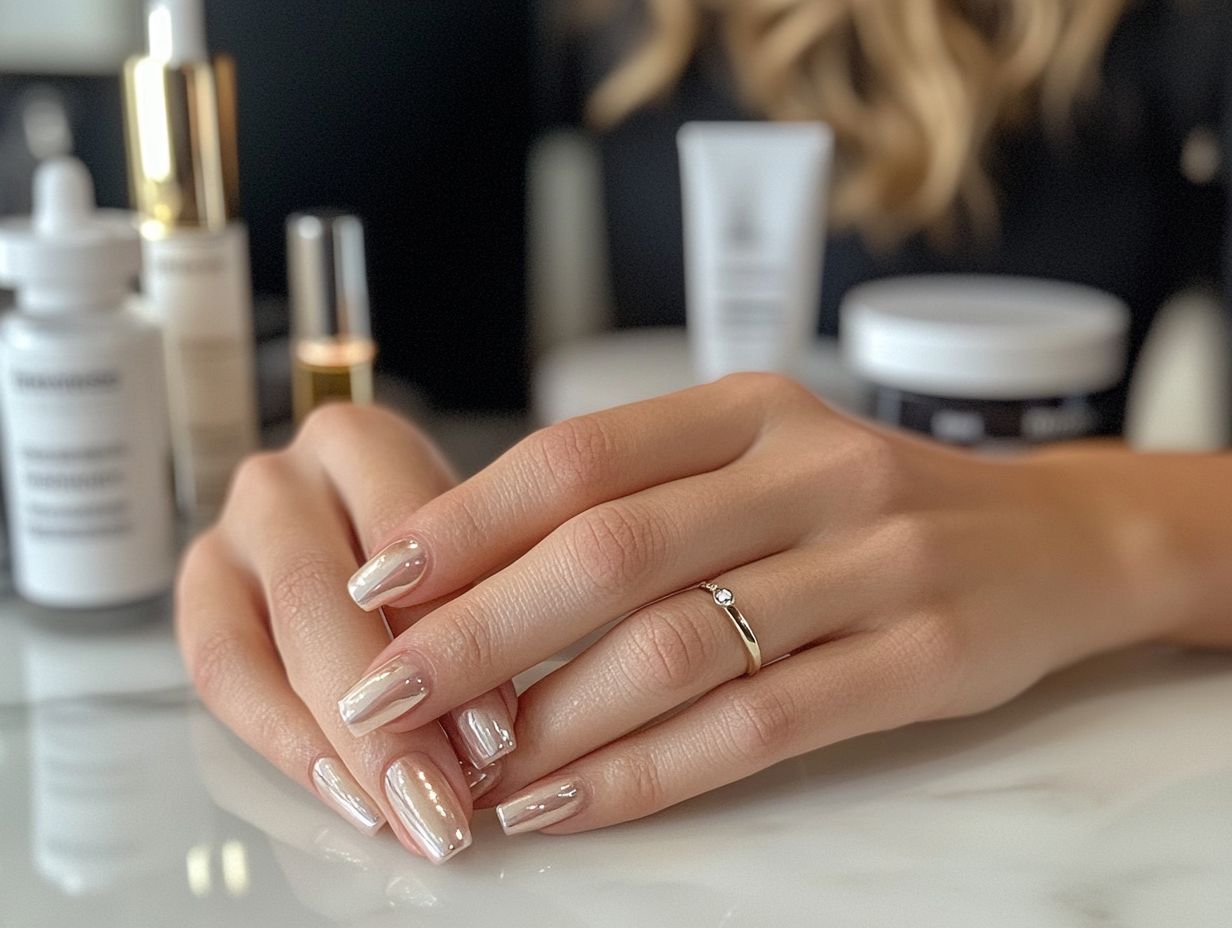
Implementing proper nail care techniques, such as regular nail trimming, filing, and the application of cuticle oil, is essential for maintaining healthy nails and preventing damage. By incorporating these practices into my routine, I can significantly enhance the overall appearance and strength of my nails.
When trimming my nails, I find it advisable to use sharp, high-quality nail scissors or clippers to achieve a clean edge. I also ensure that filing follows the natural shape of the nail to avoid splits. Cuticle oil is another key component, as it provides moisture to the nail beds and helps prevent hangnails, contributing to healthier growth.
I also recognize the benefits of regular hand scrubs, which exfoliate dead skin cells and promote circulation. This practice ultimately leads to well-groomed hands and nails that not only look great but also feel strong.
Supplements and Home Remedies
Incorporating supplements like biotin and utilizing home remedies has significantly enhanced my nail strength and contributed to healthy nail growth.
For anyone seeking stronger, healthier nails, I have found that combining biotin with other essential vitamins, such as vitamin E and folic acid, can make a substantial difference. These nutrients are crucial in promoting overall nail health and preventing brittleness.
Additionally, I have discovered that natural treatments like olive oil massages and coconut oil applications provide the hydration my nails need, improving their appearance and resilience.
Maintaining a balanced diet rich in leafy greens, nuts, and seeds further supports nail vitality, ensuring that they receive nourishment from within. By adopting these simple yet effective strategies, I have achieved not only stronger nails but also a more radiant overall look.
Common Nail Problems and Solutions
I recognize that common nail problems, such as brittle nails, nail fungus, and ingrown nails, can significantly affect overall nail health.
By understanding these issues, I can identify effective solutions and treatments to restore optimal nail condition.
Brittle Nails
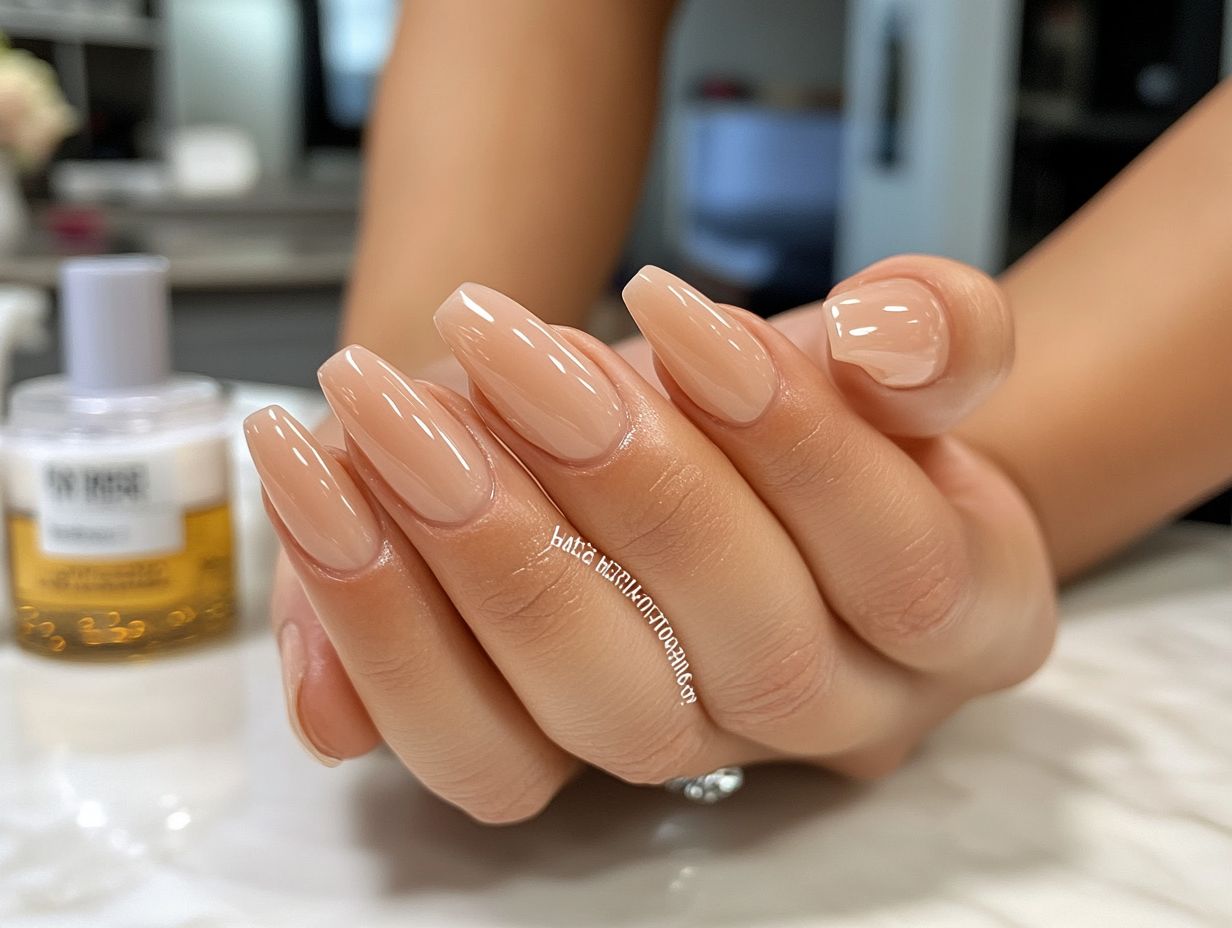
Brittle nails, which tend to split and break easily, often result from a lack of hydration and essential nutrients. Therefore, I recognize that proper nail treatments and adequate hydration are crucial for improving their condition.
These issues can arise from various factors, including environmental stressors, dehydration, and poor dietary choices. I understand that a diet lacking in vitamins and minerals can significantly affect nail health, with nutrients like biotin, zinc, and omega-3 fatty acids being essential for strengthening nails.
To address brittleness, I focus on integrating effective hydration strategies, such as ensuring sufficient fluid intake and using moisturizing nail oils.
Additionally, I consider preventive measures, like wearing gloves during household chores, to protect my nails from harsh chemicals. Ultimately, I believe that a holistic approach to nutrition and nail care plays a significant role in achieving healthier and more resilient nails.
Nail Fungus
Nail fungus is a common condition that I recognize can lead to discolored, thickened, and brittle nails. This highlights the importance of maintaining proper nail hygiene and seeking timely treatments for both prevention and resolution.
This fungal infection often stems from various types of fungi, including dermatophytes, which thrive in warm, moist environments. I am aware that symptoms may initially present as a white or yellow spot under the tip of the nail, which can progressively worsen into more serious issues, including pain and potential nail loss if left untreated.
Effective treatments typically require antifungal medications, whether topical or oral, based on the infection’s severity. To prevent recurrence, I emphasize the necessity of good nail hygiene practices—keeping nails clean and dry, avoiding tight footwear, and using antifungal powders in shoes can significantly reduce the risk of reinfection.
Ingrown Nails
Ingrown nails occur when the edges of the nail grow into the surrounding skin, which can cause significant pain and lead to potential infections. This makes prompt treatment and preventive care essential.
There are various reasons why this condition can arise, including improper nail trimming techniques, wearing tight footwear, and anatomical factors such as unusually curved nails. Symptoms typically present as swelling, redness, and discomfort in the affected area, and if an infection develops, there may be pus or drainage as well.
To address ingrown nails, I often recommend simple home remedies like warm soaks and antibiotic ointments for relief. However, in more severe cases, professional intervention may be necessary, which could involve nail removal or corrective procedures.
Preventing ingrown nails is crucial and involves maintaining proper nail care, selecting appropriately sized shoes, and avoiding overly short nail clipping. By following these guidelines, I can help ensure that discomfort and complications are kept at bay.
Preventive Measures for Healthy Nails
I believe that implementing preventive measures for maintaining healthy nails is essential.
This involves cultivating good habits, adhering to proper nail hygiene practices, and regularly using effective nail care products to address potential issues before they arise.
Good Habits and Practices
Developing good habits and practices in nail care, such as maintaining proper nail hygiene and establishing a consistent routine, is essential for ensuring long-term nail health.
Incorporating regular cuticle care into my routine significantly enhances the overall appearance and strength of my nails. For example, gently pushing back my cuticles and keeping them moisturized helps prevent hangnails and promotes healthy growth.
Additionally, using hand creams and moisturizing products is crucial for keeping my hands and nails hydrated, which helps prevent brittleness and breakage. Regularly trimming my nails and applying nourishing oils also provide protective benefits.
This comprehensive approach to nail care fosters both resilience and beauty in my nails.
Protecting Nails from Damage
Protecting my nails from damage is essential for maintaining their health, and it requires adopting specific strategies for prevention and utilizing effective treatments.
For instance, I incorporate practices such as wearing gloves during household chores, which significantly reduces the risk of breaking or chipping my nails. These protective coverings serve as a barrier against harsh chemicals and excessive moisture during activities that may expose my nails to potential harm.
Additionally, I prioritize selecting vitamins or topical treatments specifically designed to strengthen my nails, enhancing their resilience and promoting a healthier appearance. Regular trimming and filing, along with keeping my cuticles moisturized, further contribute to my overall nail hygiene.
Consistent care and mindful practices during my daily tasks are the foundation for long-lasting nail health, allowing me to maintain both beauty and functionality.


